1. Proper and Improper fractions
- Books Name
- class 7 Mathematics Book
- Publication
- ReginaTagebücher
- Course
- CBSE Class 7
- Subject
- Mathmatics
Chapter 2
Fractions and Decimals
Proper and Improper fractions
Types of Fractions
There are three major types of fractions
Proper Fraction
Improper Fraction
Mixed Fraction
Proper Fractions
Proper Fraction
Fractions where numerator is always smaller than the denominator.
It's called proper because the number of region will always be lower than the total number of region. Fore.g.1/3,1/6,2/7,9/10 and so on.
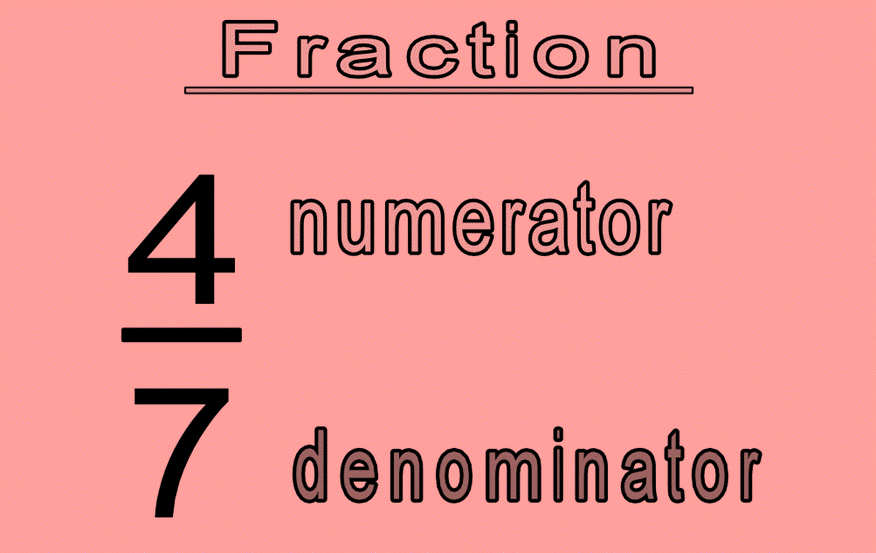
The value of a proper fraction will always be lower than 1.
Improper Fractions
Fractions where numerator is always further than the denominator.
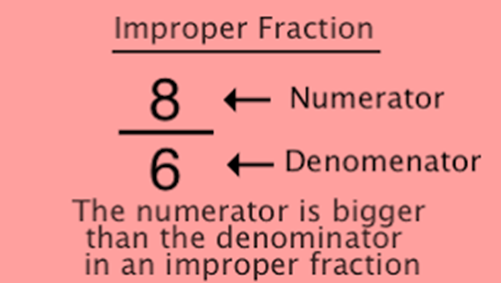
It's called improper because the number of region will be more than the total number of region. Fore.g.5/3,9/6,8/7,
The value of a proper fraction will always be more than 1.
Mixed Fraction
Fractions where there's a combination of a whole and a fractional part. e.g.
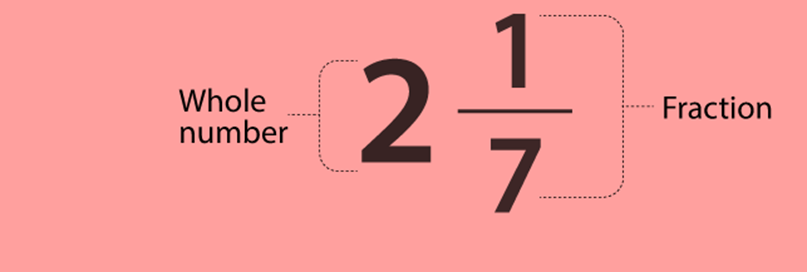
All Improper fractions can be expressed as mixed fractions
Like and Unlike Fractions
Like fractions are fractions with same denominator. For eg ½,15/2,19/2 and so on.
Unlike fractions are fractions with different denominators. Fore.g.16/5,7/8, ½,2/5,2/10.
It's important to note that like and unlike fractions are decided only on the base of denominator. The value of numerator doesn't count.
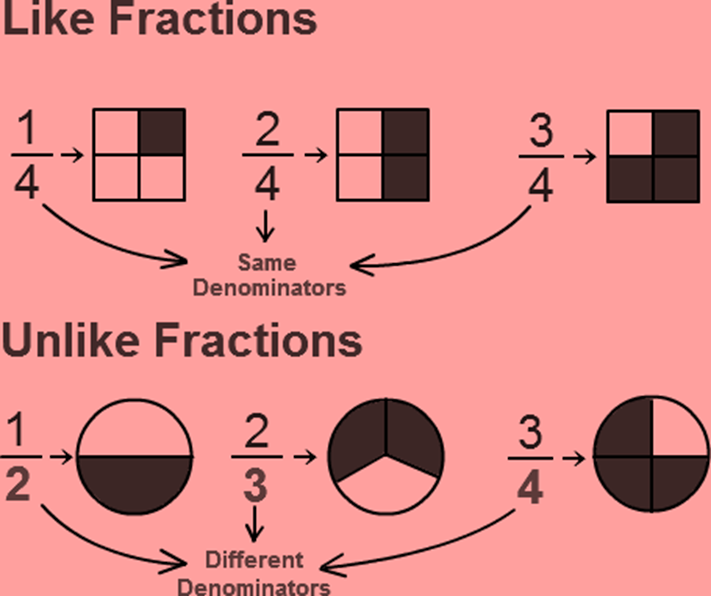
Equivalent Fractions
Equivalent fractions are fractions which represent the same number.
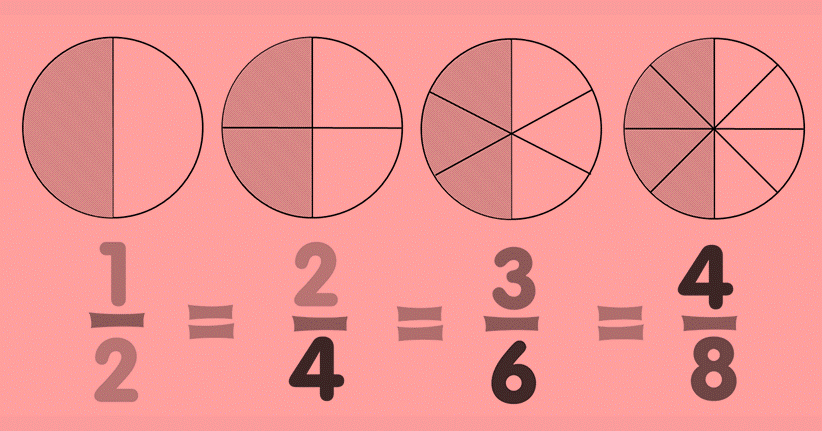
e.g. Dipu divides the pizza into 2 equal halves and eats one half of it. Bholu divides the same pizza into 4 equal halves and eats two region of it.
Pizza Share eaten by Bholu = 2 region out of 4 = 2/4. This can be further reduced to get = ½ = 0.5
Pizza Share eaten by dipu = 1 part of out of 2 = ½.
½ = 0.5.
therefore, although the fractions are2/4 and1/2 but they represent the same numbers. Hence they're equivalent fractions.
In order to make equivalent number, we've to multiply both the numerator and the denominator by the same number. For eg we get the following fractions when we keep on dividing both the numerator and the denominator by the number 2.
These fractions are equivalent since all of them can be reduced to the simplest fraction- ½.
Equivalent fraction can also be formed by separating both the numerator and the denominator by the same number.
It's important to note that the number by which we divide has to be similar that the number divides both the numerator and the denominator ideally.
accordingly, we can first find the HCF of the numerator and the denominator further divide them by the HCF.
These fractions are equivalent since all of them can be reduced to the simplest fraction- ½. Comparing Fractions
Comparing Like Fractions
In like fractions, the denominators are the same. So, only numerators are compared.
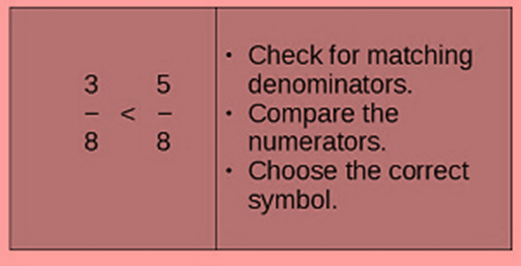
The one with bigger numerator is the bigger fractions.
e.g. ¾>1/4
Comparing Unlike Fractions
In unlike fractions, denominators are different.
primarily, we try and make the denominators same.
This is done by converting fractions into equivalent fractions. To do this, the LCM of different denominators.
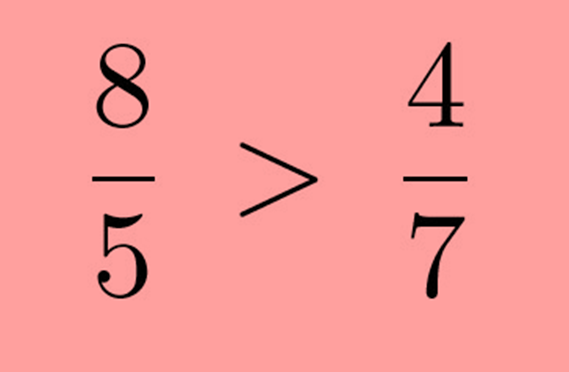
Each fraction is converted into a form like that the LCM as the common denominator of both the fractions.
Comparison of the matching fractions attained can be done by comparing the numerators.
e.g.
LCM of 3 and 4 = 12
Multiply Numerator and denominator of1/3 by 4 similar that the equivalent fraction has 12 in the denominator
1 *4/3 * 4 = 4/12
Multiply Numerator and denominator of2/4 by 3 similar that the equivalent fraction has 12 in the denominator
2 *3/4 * 3 = 6/12
Since the denominators are the same, equating the numerators we get
<6/12
thus,1/3<2/4
Problem Compare the fractions a) 3/ b and5/6 b)1/7 and1/4
result
and5/6 are like fractions because they've common denominators.
5 is greater than 3, so5/6 is more than3/6 and ¼ are unlike fractions.
primarily, we try and form the denominators equal.
This is done by converting fractions into equivalent fractions. To do this, the LCM of different denominators.
The LCM of 7 and 4 is 28. We get
1 *4/7 * 4 and 1 *7/4 * 7
4/28 and7/28
These are like fractions now. Comparing the numerators, we get
<7/28.
2. Operations in Fractions
- Books Name
- class 7 Mathematics Book
- Publication
- ReginaTagebücher
- Course
- CBSE Class 7
- Subject
- Mathmatics
Operations in Fractions
Fundamental operations in fractions:
Addition
Subtraction,
Division,
Multiplication
Addition and subtraction of Fractions
Addition of Like Fractions
Since like fractions have the same denominator, we retain the denominator in the final answer.
We add the numerator to get the numerator of the final fraction.
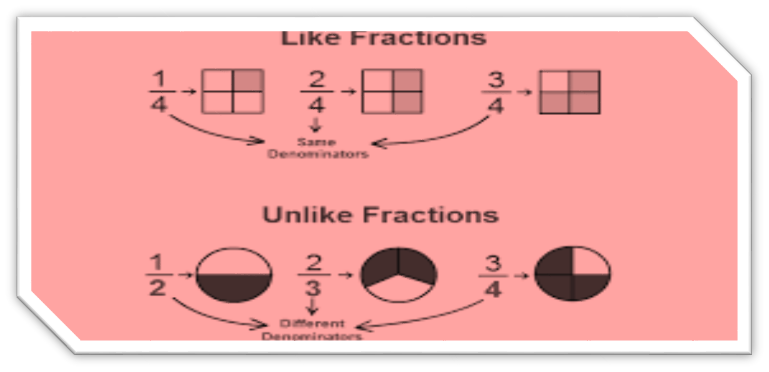
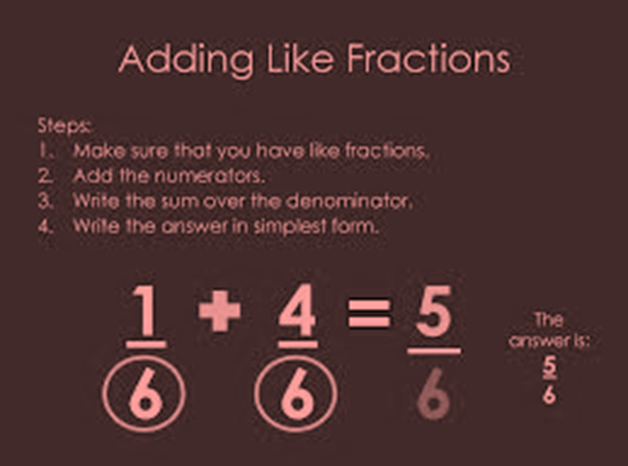
Subtraction of Like Fractions
Since like fractions have common denominator, we retain the denominator in the denominator.
The numerators are subtracted to get the numerator of the final fraction.
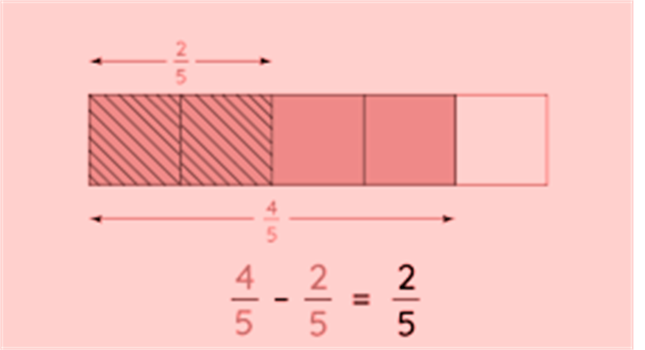
Addition of Unlike Fractions
These fractions have different denominators.
originally, the fractions are converted into equivalent fractions with a common denominator.
To do so, the LCM of denominators is calculated.
The fractions are converted into like fractions with a common denominator.
The common denominator is retained
The numerators are added.
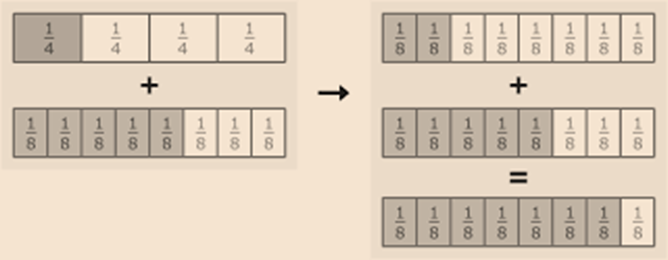
Deduction of Unlike Fractions
These fractions have different denominators.
originally, the fractions are converted into original fractions with a common denominator.
To do so, the LCM of denominators is calculated.
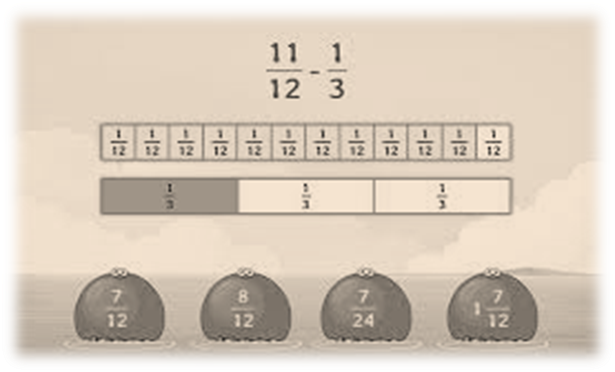
The fractions are converted into like fractions with a common denominator.
The common denominator is retained
The numerators are subtracted.
Multiplication of a Fraction by a Whole Number
To multiply a whole number with a proper or an improper fraction, we multiply the whole number with the numerator of the fraction, keeping the denominator same.
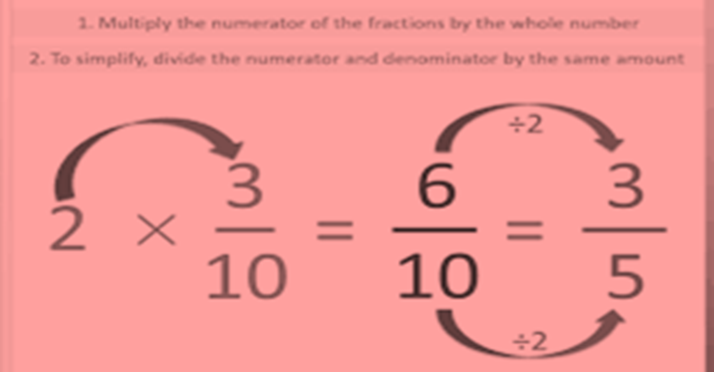
To multiply a mixed fraction to a whole number, first convert the mixed bit to an improper fraction and also multiply.
Multiplication of a Fraction by a fraction
![]()
Still, we first convert into an improper fraction, If one or both of the fractions is a mixed fraction.
When two proper fractions are multiplied, the product is lower than both the fractions. Or, we say the value of the product of two proper fractions is lower than each of the two fractions.
When two improper fractions are multiplied the product of two improper fractions is more than each of the two fragments. Or, the value of the product of two indecorous fragments is further than each of the two fragments.
Division of fractions
Division of a fraction by a whole number
A fraction being divided by a number is original to the bit being multiplied by the supplementary of the number.
A complementary of the number is a number which we multiplied by the original number gives1. Fore.g. the complementary of 2 is ½ since 2 *1/2 = 1. also, the complementary of7/2 is2/7.
In short, a complementary is attained by switching the numerator and denominator.
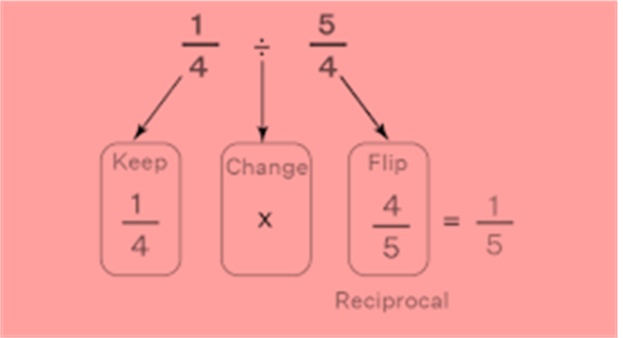
While dividing mixed fractions by whole numbers, convert the mixed fractions into improper fractions
Division of a whole number by a fraction
To divide a whole number by any fraction, multiply that whole number by the complementary of that fraction.
While dividing a whole number by a mixed fraction, first convert the mixed fraction into improper fraction and also answer it.
3. Decimal Numbers
- Books Name
- class 7 Mathematics Book
- Publication
- ReginaTagebücher
- Course
- CBSE Class 7
- Subject
- Mathmatics
Decimal Numbers
Decimals represent fractions
One block divided into 10 equal parts. In fractional terms, each part is 1/10 (one-tenth) of a unit. It can be written as 0.1 in decimal notation.
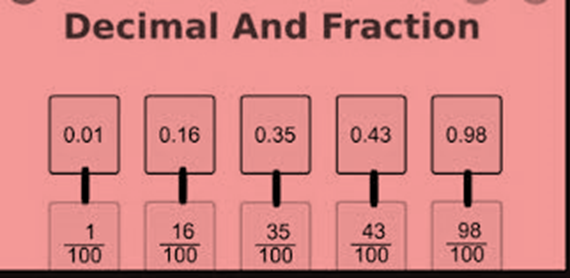
Comparing Decimals
While comparing two decimal numbers, we consider the following rules:
We compare the place values of digits from left to the right.
Extra zeroes to the right of the last digit of a decimal value do not change the value of the number.
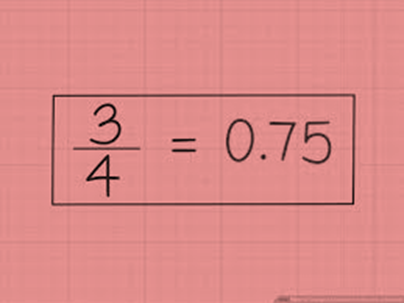
Extra zeroes between decimal point and a decimal digit do not change its value.
4. Basic operations on decimal numbers
- Books Name
- class 7 Mathematics Book
- Publication
- ReginaTagebücher
- Course
- CBSE Class 7
- Subject
- Mathmatics
Basic operations on decimal numbers
Addition and Subtraction of Decimal Numbers
Addition of Decimal numbers:
The rules for addition of numbers with Decimals are:
- Numbers are written under each other. The decimal points lie under each other, in the same vertical line.
- Addition is done column wise.
- Addition is started from the right hand side and then we move to the left hand side.

Subtraction of Decimal numbers:
The rules for subtraction are:
- The smaller number is written under the bigger number.
- The numbers are written in such a way that the decimals are in the same vertical line.
- Subtraction is started from the right hand side.
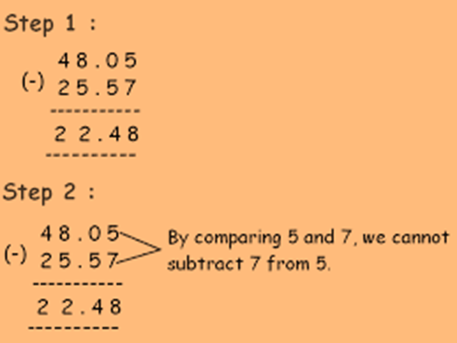
Multiplication of decimal numbers
When two decimal numbers are multiplied, we simply multiply the numbers (without their decimal points)
Then we count the total number of digits after the decimal point, taking both the decimal numbers.
The decimal point is placed in the product such that the total number of digits after the decimal point is equal to the total number obtained
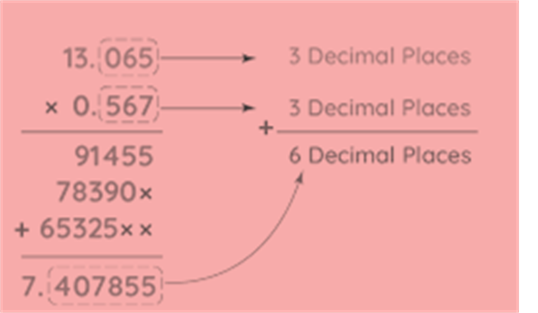
When a decimal number is multiplied by 10, 100 or 1000, the digits in the product are same as in the decimal number but the decimal point in the product is shifted to the right by as , many of places as there are zeros over one.
Division of Decimal Numbers
Firstly, write the decimal numbers in fractional form. For e.g. 0.5 is 5/10.
Multiply the dividend with the reciprocal of divisor. The answer obtained is the required answer.
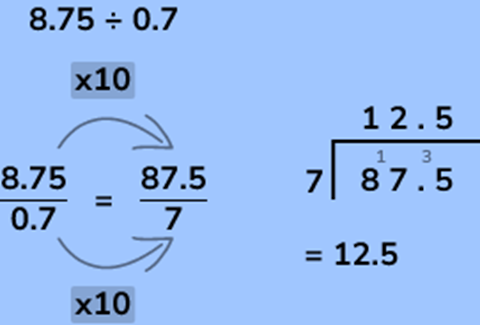
While dividing a number by 10, 100 or 1000, the digits of the number and the quotient are same but the decimal point in the quotient shifts to the left by as many places as there are zeros over one.

 Param Publication
Param Publication
 ReginaTagebücher
ReginaTagebücher
